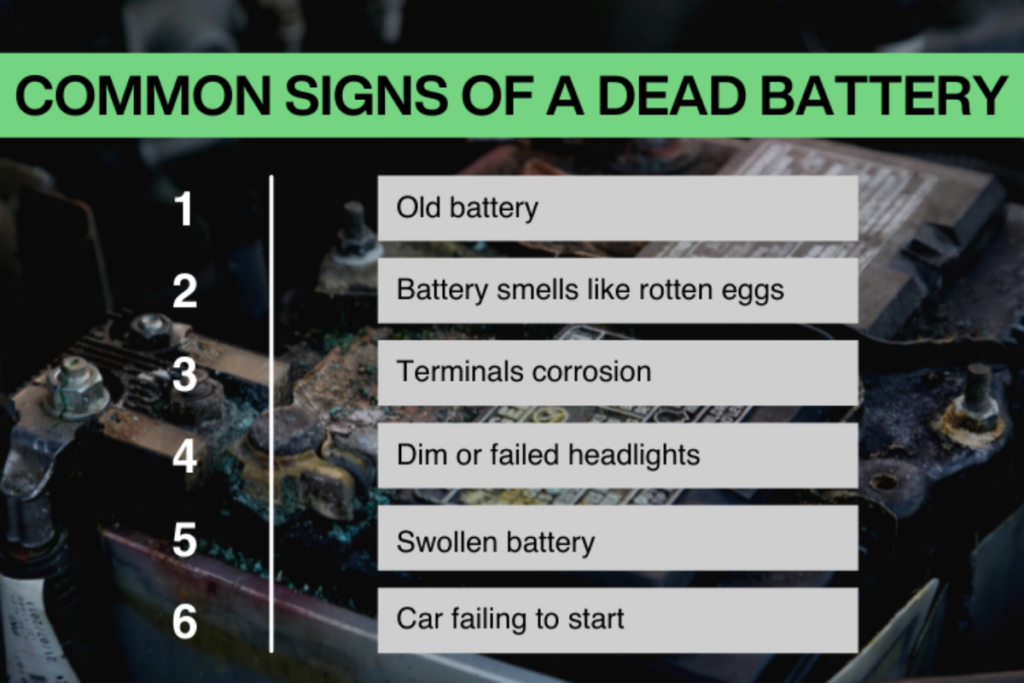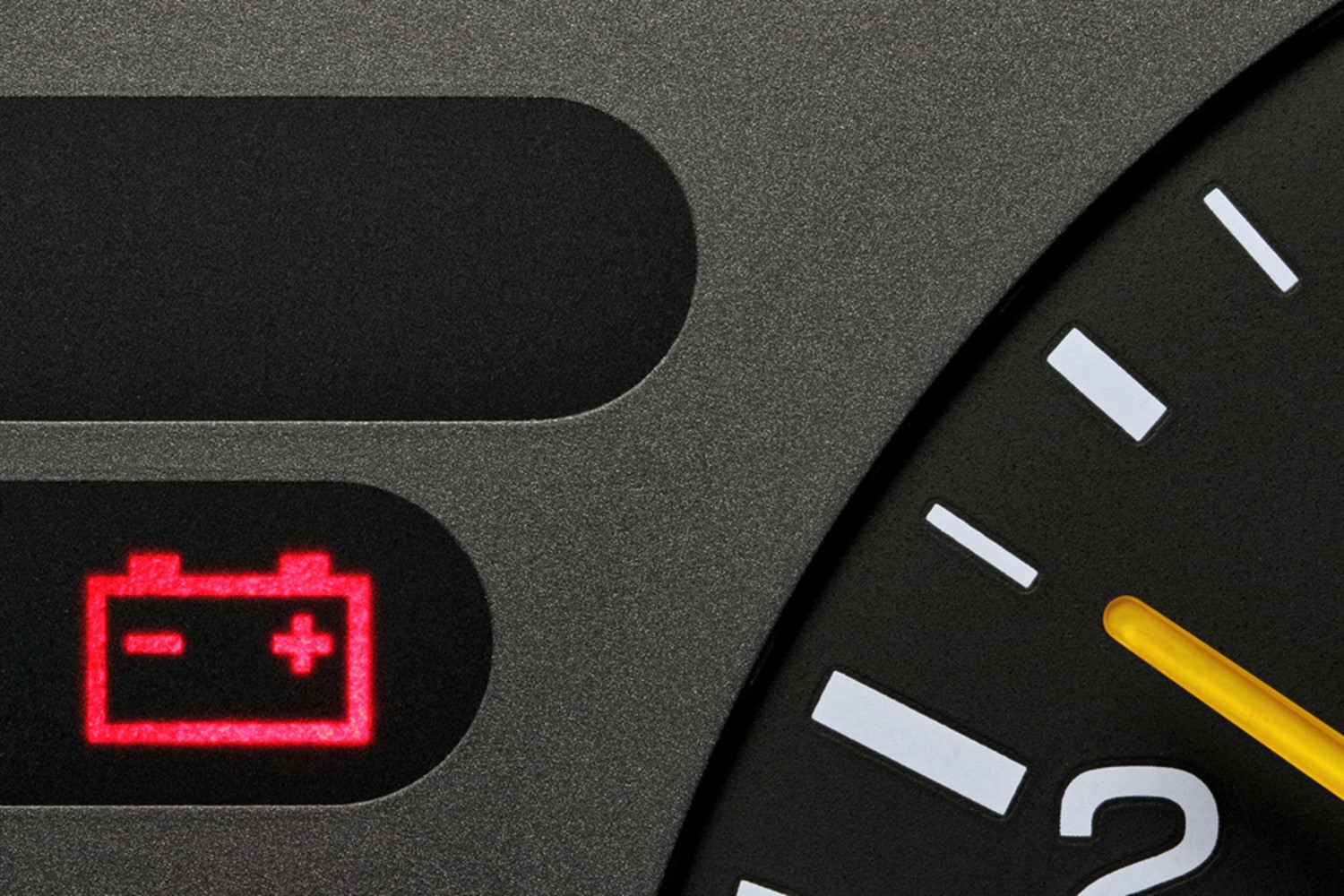To know if a car battery is dead, turn the key in the ignition, and the battery is likely dead if the engine doesn’t crank. Your car’s battery plays a crucial role in providing the necessary electrical power for starting the engine and powering the vehicle’s electrical systems.
However, over time, the battery’s charge can deplete, or it may experience issues that cause it to fail. If you suspect that your car battery is dead, it’s essential to confirm this before seeking a solution. We will discuss common signs and methods to determine if the battery in your automobile is dead.
By identifying a dead battery, you can promptly take the necessary steps to address the issue and start your vehicle again.
Signs Of A Dead Car Battery
A dead car battery can cause frustration, leaving you stranded and unable to start your vehicle. However, you can Prevent being taken aback by knowing the signs of a dead car battery. Keep an eye out for the following indicators that your car battery might be over:
Car Not Starting
If your car refuses to start, it could indicate a dead battery. When you turn the key or push the ignition button, the engine fails to crank, leaving you with nothing but silence. Typically, this is among the clearest indicators that your vehicle’s battery is dead or on its last leg.
Dim Headlights And Electrical Issues
Dim headlights and other electrical issues can often be attributed to a dead car battery. If you notice that your headlights are significantly weaker or that your Interior lighting is not as bright as it usually is. It might be time to check your battery. Additionally, your car’s other electrical systems, including power windows or the radio, may not operate correctly or exhibit sluggishness, indicating a potential battery problem.
Clicking Sound When Trying To Start
If when you attempt to start your car, there is a clicking sound, it could be a sign that your car battery is dead or close to dying. This clicking noise is often an indication that there is not enough power in the battery to engage the starter motor. Instead of the usual cranking sound, you hear a repetitive clicking noise, a clear warning sign.

Credit: www.carpages.ca
Testing The Car Battery
When your car refuses to start, or you notice a sluggish response when you turn the key, your car battery may die. Understanding how to test your car battery can save you time, money, and the frustration of being stranded in the middle of nowhere.
This section will discuss three methods for testing your car battery: using a multimeter, visually inspecting the battery, and utilizing a battery load tester.
Using A Multimeter
A multimeter is a versatile tool that measures an electrical circuit’s voltage, current, and resistance. It can be used to determine the voltage output of your car battery and help identify if it’s dead or severely discharged. Follow these steps to test your car battery using a multimeter:
- Ensure your vehicle is turned off, the key removed from the ignition, and the lights are turned off.
- Set the multimeter to the 20-volt DC range.
- Connect the multimeter’s red probe to the battery’s positive terminal (marked with a “+” sign).
- Connect the multimeter’s black probe to the battery’s negative terminal (marked with a “-” sign).
- Read the multimeter display. If the voltage reading is below 12.4 volts, it indicates a severely discharged or dead battery that needs to be recharged or replaced.
Visual Inspection Of Battery
A quick visual inspection can provide valuable information about the condition of your car battery. Here’s how you can visually inspect your car battery:
- Open the hood of your car and locate the battery. It is usually found near the front of the engine compartment.
- Check for any corrosion or powdery substance on the battery terminals. Corrosion can inhibit the flow of electrical current and weaken the battery.
- Inspect the battery case for any bulges, cracks, or leaks. These can be signs of a damaged or malfunctioning battery.
- Ensure the battery terminals are securely tightened and free from loose connections.
Utilizing A Battery Load Tester
A battery load tester is a specialized tool designed to measure the cranking amp capacity of a battery and provide a more accurate assessment of its condition.
Although it may require an additional investment, using a battery load tester can offer more reliable results. Here’s how you can utilize a battery load tester:
|
Causes Of Car Battery Failure
Recognizing the causes of automobile battery failure can help car owners take preventive measures and extend the life of their batteries. Several factors can contribute to car battery failure, including extreme temperatures, aging batteries, and parasitic drains.
Extreme Temperatures
Extreme temperatures can have a significant impact on a car battery’s performance. High temperatures can cause the evaporation of the electrolyte within the battery, leading to decreased capacity and eventual failure. On the other hand, extreme cold can reduce the battery’s ability to provide sufficient power to start the car, eventually resulting in a dead battery.
Aging Battery
An aging battery is a common reason for car battery failure. Over time, the chemical reactions within the battery degrade the internal components, reducing the ability to hold a charge. Batteries become more fragile with age, susceptible to failure, and may eventually end their useful life.
Parasitic Drain
Parasitic drain refers to the continuous power drawn from electrical components when the car is turned off. This can occur due to faulty wiring, malfunctioning components, or even leaving the lights on. Parasitic drain can gradually deplete the battery over time, eventually causing it to fail.

Credit: www.mccarthycollisioncenters.com
Solutions For Dead Car Battery
If you discover that the battery in your automobile is dead, don’t panic! There are several solutions to get your engine running again. This section will explore three standard methods: jump-starting the car, replacing the battery, and addressing underlying issues. Learn more about each solution and get your vehicle back on the road.
Jump-starting The Car
If your car battery is dead, jump-starting it can quickly fix it. Here’s a step-by-step guide on how to do it:
- Park another vehicle with a charged battery close to your car, but ensure the two cars are not touching.
- Connect the positive (red) jumper cable clamp to the dead battery’s positive terminal.
- Attach the opposite end of the positive jumper cable to the charged object’s positive terminal battery.
- Connect the negative Jumper cables (black) clamped to the negative terminal of the charged battery.
- Take the remaining negative jumper cable clamp and attach it to an unpainted metal surface on your car’s engine block, away from the battery.
- Start the vehicle’s engine with the charged battery and let it run for a few minutes.
- Try starting your car. If it starts, let both engines run for a few more minutes before taking the jumper cables off.
- Remove the jumper cables in reverse sequence, beginning with the negative cable on the engine block.
Replacing The Battery
If jump-starting doesn’t work or your car battery keeps dying, it may be time to replace it. Follow these steps to replace your car battery:
- Locate the battery in your vehicle’s engine bay.
- Disconnect the negative (black) terminal first by loosening the nut and lifting off the cable.
- Repeat the same process for the positive (red) terminal.
- Unfasten the battery retaining bracket or strap to release the battery.
- Remove the old battery from the engine bay.
- Place the new battery in the same position and secure it with the retaining bracket or strap.
- Reconnect the positive (red) terminal to the battery, followed by the negative (black) terminal.
Addressing Underlying Issues
Sometimes, a dead car battery may indicate underlying issues with your vehicle’s electrical system. If you experience recurring battery problems, it’s advisable to have a professional mechanic inspect your car. They can identify the root cause and fix any wiring, alternator, or charging system problems.
Regular maintenance, such as keeping your battery terminals clean and checking the charging system, can help prevent future battery failures. Remember to replace your car battery when it reaches the end of its lifespan, typically between three to five years.
Preventive Measures
Is your car struggling to start? A dead battery could be the culprit. Look out for dimming headlights, sluggish engine cranking, and a clicking sound when you turn the key. If you experience these warning signs, check your battery to prevent being stranded.
Preventing a dead car battery is always better than getting stuck with one in the middle of nowhere. Simple preventive measures can save you from the hassle and frustration of a dead battery. Here are some steps you can take to ensure that your car battery remains in good condition:
Regular Maintenance
Regular maintenance is vital in keeping your car battery healthy and extending lifespan. Here are some maintenance tips you can follow:
- Inspect the battery terminals and ensure they are clean and corrosion-free. Corroded terminals can hinder the battery’s ability to charge and discharge properly.
- Check the battery’s fluid levels regularly and top up if necessary. Low fluid levels can lead to poor battery performance.
- Ensure that the battery is firmly installed in the assigned place. Loose or improperly mounted batteries can cause damage due to vibrations while driving.
- Keep the battery clean from dirt, dust, and any other debris. Regularly wipe it down with a clean cloth.
- Test your battery’s voltage periodically using a multimeter. This will allow you to determine any possible problems before they become significant problems.
Proper Use Of Electrical Systems
The electrical systems in your car can strain the battery if misused. You can minimize the drain on your battery by following some preventive measures. Here’s what you can do:
- Avoid turning your headlights, interior lights, or other electrical devices on when the engine is off. This can drain your battery quickly.
- Do not use high-powered electrical accessories for an extended period with the engine off. These accessories consume a significant amount of battery power.
- Limit power-hungry devices, such as heated seats or rear window defoggers, especially if your battery is already weak or old.
- If you will be away from your car, If you plan to leave the battery disconnected for a long time, the battery’s negative terminal to prevent slow drain issues.
:max_bytes(150000):strip_icc()/why-does-car-battery-die-4140227-ad907eef646446d6a1306940af16410a.jpg)
Credit: www.lifewire.com
How To Test A Car Battery To See If It Is Bad
Testing a car battery is a straightforward process, and you can use a few methods to determine if it’s in good condition. Here are three common ways to test a car battery:
- Voltage Test:
- Equipment Needed: A digital multimeter.
- Steps:
- Set your multimeter to the DC voltage setting.
- Connect the red (positive) probe to the battery’s positive terminal.
- Connect the black (negative) probe to the battery’s negative terminal.
- A healthy car battery should read around 12.6 volts. If the voltage is significantly lower (e.g., below 12 volts), it may indicate a weak or discharged battery.
- Load Test:
- Equipment Needed: A battery load tester.
- Steps:
- Disconnect the battery cables (negative first, then positive).
- Connect the load tester’s positive lead to the positive battery terminal and the negative lead to the negative terminal.
- Apply the load as per the tester’s instructions (usually for 15 seconds).
- The voltage shouldn’t drop below 9.6 volts during the test. If it does, the battery may be faulty.
- Hydrometer Test (for Lead-Acid Batteries):
- Equipment Needed: A battery hydrometer.
- Steps:
- Remove the cell caps from the top of the battery (if applicable).
- Insert the hydrometer into each cell and draw electrolytes into the hydrometer.
- Compare the specific gravity readings with the battery’s specifications. Lower specific gravity may indicate a discharged or faulty battery.
Remember that safety is crucial when handling car batteries. Wear appropriate protective gear, and if you’re unsure about the process, consider seeking professional assistance.
If your battery fails any of these tests, it may be time to replace it. Some auto parts stores and service centers offer free battery testing services if you prefer professional assistance.
Frequently Asked Questions For How To Know If Car Battery Is Dead
How Do You Know If A Car Battery Is Dead?
To determine if a car battery is dead, check for signs like dim headlights, difficulty starting the car, or a clicking sound when turning the key. You can also use a multimeter to measure the voltage if it reads below 12.
Four volts, the battery may be dead and needs replacement.
How Long Does It Take For A Car Battery To Die?
The lifespan of a car battery can vary, but on average, it can last anywhere from three to five years. Factors like extreme weather conditions, frequent short trips, and insufficient maintenance can shorten its lifespan. Regularly checking the battery’s voltage and taking preventive measures can help prolong its life.
Can A Dead Car Battery Be Recharged?
Sometimes, a dead car battery can be recharged using a charger or by jump-starting the car with jumper cables. However, if the battery is damaged or too old, it may not hold a charge and must be replaced.
It’s always best to consult a professional if you’re unsure.
Conclusion
Knowing the signs of a dead car battery is crucial for every vehicle owner. You can prevent being stranded at an inconvenient time by monitoring indicators like slow starting, dimming lights, and a warning light on the dashboard.
Regular maintenance and testing can ensure your battery stays in top condition, allowing for a stress-free driving experience.

I am a Mahdi . I have four two of experience in Technology and all types of Battery’s like Solar Battery, Car Battery, Lithium Battery etc. So I work on solving these issues and give various tips on these issues.
